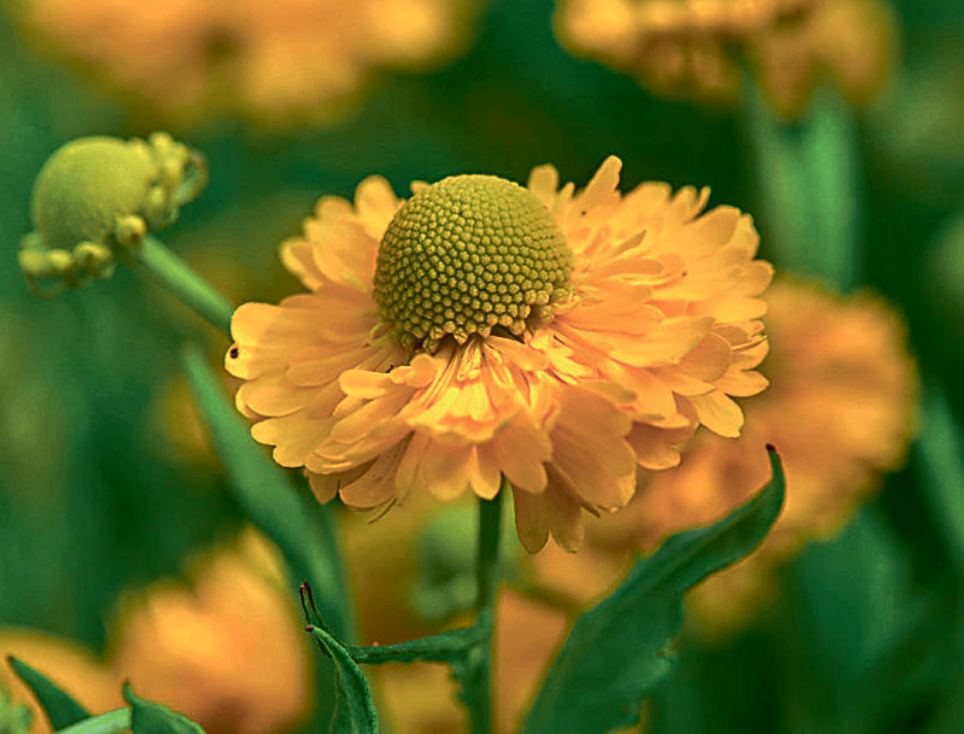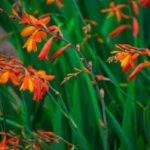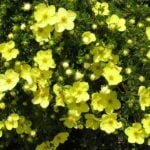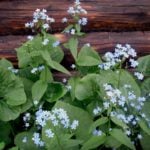Gardeners have long included this plant in the list of favorites, bees invariably adore it, and neighbors in the flower garden cherish close friendship! It is not surprising that breeders became interested in our hero and brought out varieties with interesting color and shape of flowers. Let me introduce you, a familiar stranger Helenium!
In the main photo: ‘Double Trouble’ is one of the first heleniums with a double row of marginal lingual flowers. Yellow “suns” of the plant hover on strong peduncles at a meter height above the ground.
Helenium: dossier
- Inflorescences: yellow, orange, red with brown, yellow or green midpoint, appear depending on the variety from June to September.
- Place of growth: sunny, not too hot, with moist fertile soil.
- Care: tall plants should preferably be shortened, bushes older than 4 years should be divided, planted in spring if possible, regularly fed, pruned after flowering.
In the photo: ‘Waltraut’ is a hybrid up to 90 cm high with large red—orange flowers with a chocolate-brown center. The buds bloom massively in August — September.

Helenium belongs to those rare herbaceous perennials that were easily moved from traditionally rustic gardens to modern flower beds. What is the secret of such a dizzying “career” and popularity?
The decisive role was played, of course, by the lush and colorful flowering. In the photo: ‘Crimson Beauty’ and other red-brown heleniums need not too bright partners. The best candidates are silvery plants, for example Artemisia ludoviciana.
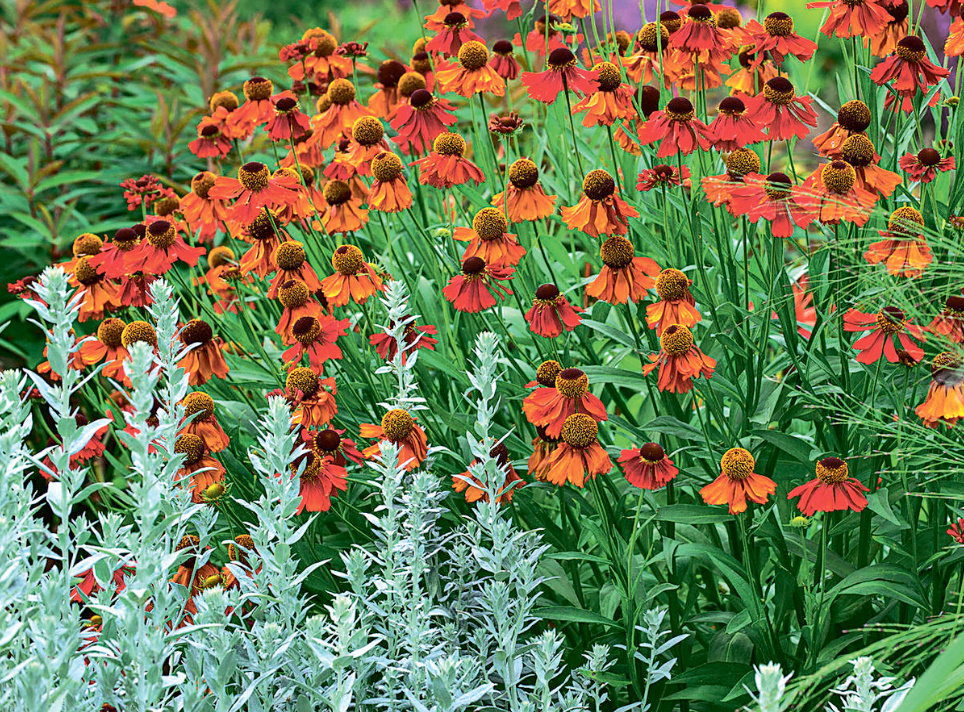
Starting from the end of June and until September, this unassuming long-flowering plant blooms with rich yellow, orange and red lights.
In the photo on the left: a flower garden of lemon-yellow Helenium ‘Kanaria’ (in the foreground), blue multicolored ‘Blue Fortune’ and rich yellow sunflower ten-leaf looks fresh and bright in summer. On the right: insects adore the long-blooming handsome. Here the bumblebee chose the flower ‘El Dorado’ as a landing pad.
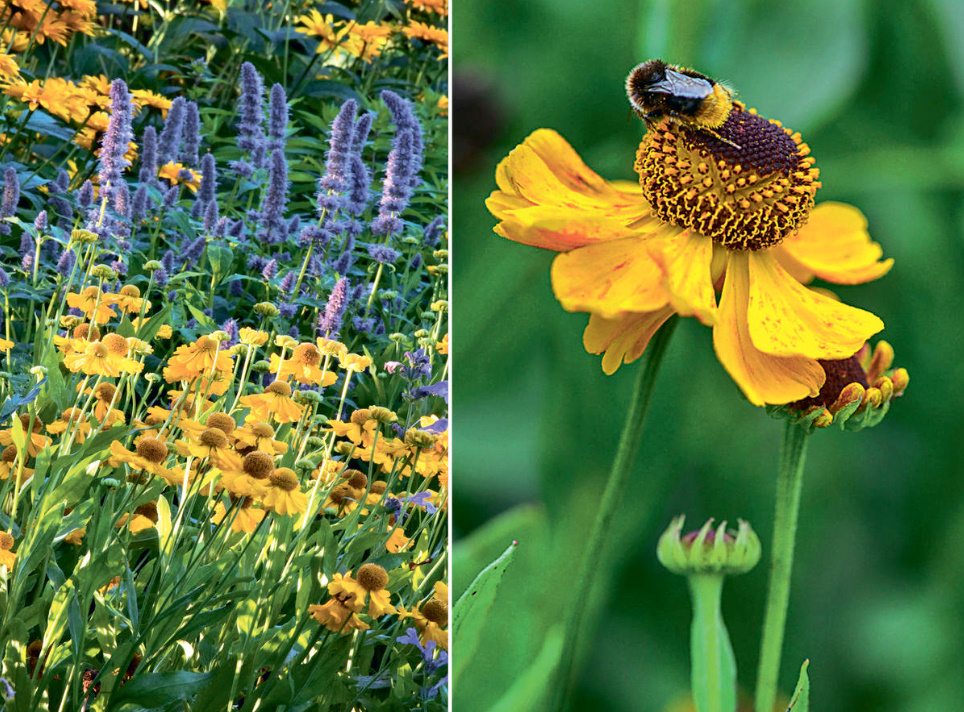
The height of a bright handsome man is also what you need. Heleniums often reach a height of one and a half meters or more, which makes them ideal candidates for planting in the background of flower beds or along fences and walls.
Before tall heleniums, such as the copper-red ’Baudirektor Linne’ (130-150 cm) in the photo below, it is advisable to plant a number of shorter herbaceous perennials, for example Coreopsis verticillata, Anaphalis, Calamintha nepeta or Aster dumosus.
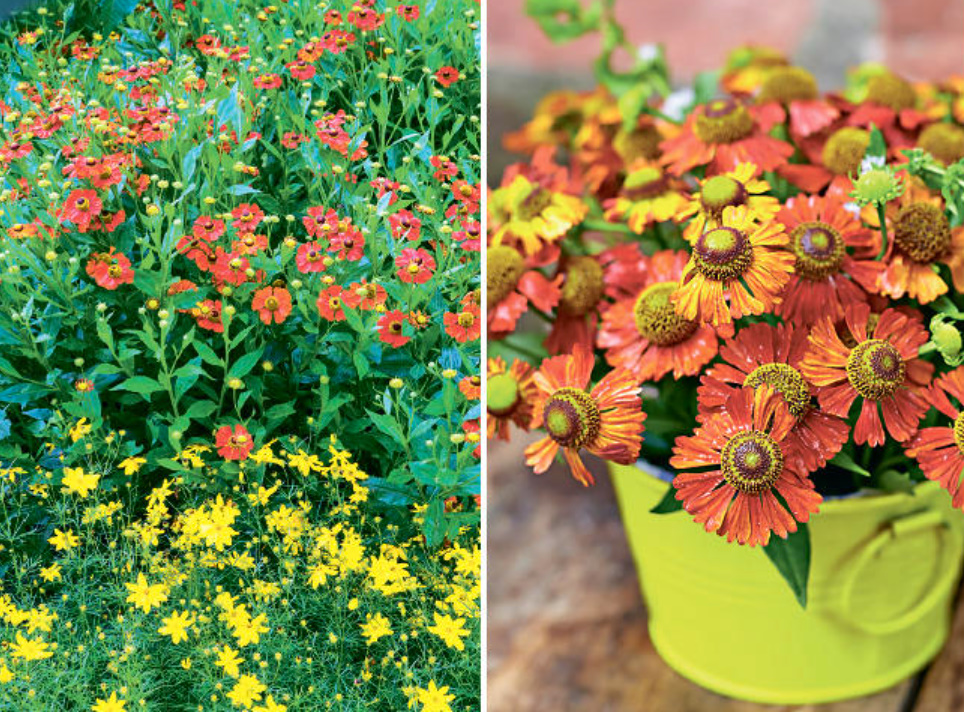
Helenium is a great option for a summer bouquet. But keep in mind that you need to cut the stems when the flowers fully open, because they do not bloom in the water.
It is worth noting that Heleniums of some varieties with powerful shoots, for example ‘Rauchtopas’, are unable to “lay on their shoulders” even a strong wind. The rest still want a support and a place in a quiet corner.
Tip: to make tall plants more compact, at the beginning of summer, you can shorten their shoots by half. Thanks to this procedure, the flowering time also shifts slightly and comes 3-4 weeks later.
As an alternative, you should immediately look at the heleniums of low-growing varieties, for example, the wine-red ‘Rubinzwerg’ or yellow ‘Windley’, whose height barely reaches a meter.
How to care for Helenium
The care of a perennial is simple: it needs to be provided with a sunny place, ideally, without stagnation of dry air, because of which the flowers droop. But if the plants are well watered, Helenium, which has bowed its head in the heat, will come to life again in the morning and will delight the eye with freshness and cheerfulness.
A loamy soil rich in humus is optimal for him.
It is also advisable to regularly feed our hero with compost (1 l / m²) and complex mineral fertilizer — then the plant will bloom from year to year, without requiring division and transplantation.
Whether it is necessary to rejuvenate the handsome man, he will tell you himself — if the bush is bare in the center, then it’s time. In general, it is necessary to rejuvenate the plant every 3-4 years, because, having reached maturity, Helenium often freezes.
And finally: on the eve of winter, all the shoots can be safely cut off at the very base.
